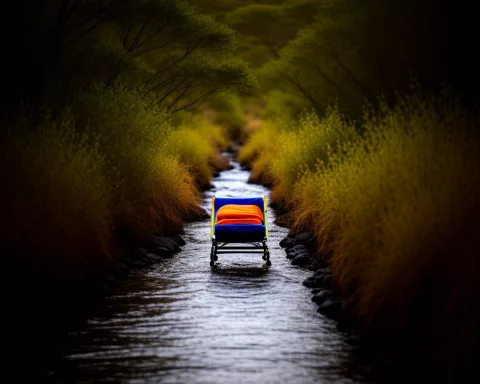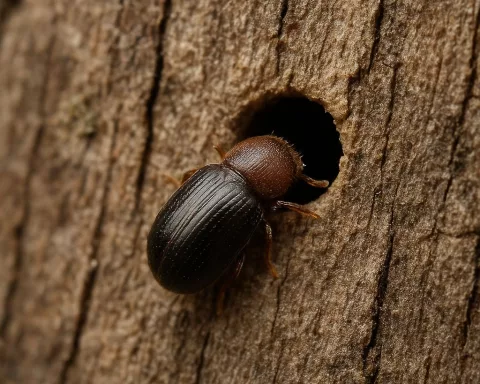Dinosaur tracks discovered in South Africa’s Western Cape are like magical windows into the past, revealing how these incredible giants once moved and lived. Recent findings show footprints from about 140 million years ago, offering fresh clues about dinosaurs in a region previously thought to have few traces of them. These footprints, found in sandy and muddy areas, tell stories of the dinosaurs’ daily lives and add excitement to our understanding of their world. As researchers continue to explore this area, they hope to uncover even more tracks, inspiring everyone to join the adventure of discovering the mysteries of our planet’s ancient past.
What are the significance and findings of dinosaur tracks in South Africa’s Western Cape?
Dinosaur tracks in South Africa’s Western Cape provide unique insights into the behavior and movement of these ancient creatures. Recent discoveries reveal footprints from the early Cretaceous period, enhancing our understanding of dinosaur distribution and encouraging further exploration of this rich geological region.
The Allure of Dinosaur Discoveries
Dinosaurs have captivated the human imagination for centuries, blending a sense of awe with an insatiable curiosity. This fascination took a significant leap forward in 1822 when Gideon Mantell, a pioneering geologist and paleontologist, documented the first dinosaur bones and teeth. These remnants from the Mesozoic Era—spanning roughly from 252 million to 65 million years ago—have provided a wealth of information about these ancient creatures. However, among the many types of fossils, dinosaur tracks hold a uniquely compelling charm. These footprints provide a dynamic window into the daily lives and behaviors of these long-extinct giants.
Ichnology: The Study of Ancient Tracks
Ichnology, the scientific discipline that focuses on tracks and traces, delves into this captivating aspect of paleontology. The Cape South Coast Ichnology Project, initiated in 2008, has documented over 370 vertebrate track sites along the southern coast of South Africa. These sites primarily date back to the Pleistocene Epoch, which ranges from about 2.6 million to 11,700 years ago, making them relatively recent compared to the Mesozoic. Nevertheless, the coastline also conceals Mesozoic sedimentary rocks, some of which contain non-marine sediments that are ideal for preserving dinosaur tracks.
Embarking on an exploration of dinosaur tracks along South Africa’s Western Cape, researchers experienced in Canadian ichnology sought to uncover similar evidence in this new setting. Initial explorations revealed that not only did such tracks exist, but they were also more abundant than anticipated. In a recent publication in the journal Ichnos, these discoveries were meticulously detailed, highlighting footprints left by sauropods and possibly ornithopods. These tracks, set against a rugged coastal landscape, were found imprinted in various estuarine environments—some on sandy, inter-tidal bars, and others at the bottom of tidal channels where the dinosaurs’ feet had sunk into the soft mud.
A Journey Through Time: Discovering Early Cretaceous Tracks
These dinosaur tracks date back approximately 140 million years to the early Cretaceous period, a time when the African and South American tectonic plates began to drift apart. Southern Africa boasts a rich record of Mesozoic vertebrate fossils, but this record halts around 180 million years ago during the early Jurassic, coinciding with massive volcanic eruptions. Until these recent findings, all known southern African dinosaur tracks dated from the Triassic and Jurassic periods, making this discovery in the Western Cape not only groundbreaking but also the youngest recorded in the region.
The journey began in 2022, with researchers deciding to explore potential sites for dinosaur tracks along the Cape south coast. They focused on areas with non-marine deposits of the appropriate age, mainly in the eastern coastal part of the Western Cape. Preliminary visits identified a few promising locations. By 2023, a thorough examination commenced. Given that large horizontal bedding surfaces are rare in this region, researchers anticipated finding tracks mostly in vertical cliff exposures.
The popular image of dinosaur tracks often involves clear toe impressions extending across flat surfaces. While this image is accurate, tracks can also be identified in profile due to the distinctive deformation patterns created by the animals’ footfalls. These deformations, however, can resemble structures caused by seismic activity, necessitating careful differentiation. Studies from decades ago had attributed such structures in the Early Cretaceous rocks to earthquakes. Modern ichnological understanding enabled researchers to discern that both dinosaur-generated and earthquake-induced deformations were present.
Corroborating Evidence: Bone Fossils and Geological Context
Additional evidence supporting the discovery came from the local bone fossil record. The region, particularly the Kirkwood area in the Eastern Cape province, has yielded Cretaceous bone material. Notably, two dinosaur bones have been reported from the Knysna area in the Western Cape, one identified by a keen-eyed 13-year-old boy. These finds confirm that dinosaurs roamed the Western Cape, making the ichnological evidence uncovered both expected and profoundly exhilarating.
This work not only enhances the scientific understanding of dinosaur behavior and distribution but also evokes a sense of wonder and adventure. The Western Cape’s rich geological tapestry invites further exploration. The research team plans to continue investigating deposits of suitable age in the region, hopeful of uncovering even more dinosaur tracks. They aspire to inspire future generations of dinosaur trackers to embrace this quest, ensuring the spirit of discovery endures.
Bridging Temporal Chasms: The Significance of Dinosaur Tracks
In the grand narrative of Earth’s history, dinosaur tracks serve as a direct, tactile connection to a world long vanished. They allow us to metaphorically walk in the footsteps of giants, bridging the vast temporal chasm between their era and our own. Each footprint etched in the rock is a testament to the lives that once thrived and the ever-unfolding story of our planet’s past. The research in South Africa’s Western Cape not only adds a new chapter to this story but also ignites the imagination, encouraging both scientists and enthusiasts to continue exploring the mysteries of our ancient world.
The significance of these findings extends beyond mere academic interest; it resonates with our intrinsic desire to understand the world we live in. By studying these ancient tracks, we gain insights into the behavior, movement, and interactions of creatures that dominated the Earth long before humans appeared. This understanding enriches our knowledge of natural history and offers a profound appreciation of the complexities and wonders of life on Earth.
As the research continues, the team remains committed to sharing their discoveries with the public, fostering a deeper connection between people and the prehistoric world. Through educational programs, exhibitions, and publications, they aim to bring the story of these ancient giants to life, ensuring that the fascination with dinosaurs endures for generations to come. Each new discovery, each new footprint, adds to the mosaic of our understanding, creating a vivid picture of a time when giants roamed the Earth.
In conclusion, the discovery of dinosaur tracks in the Western Cape is not just a scientific milestone; it’s a journey into the heart of our planet’s history. It is an invitation to explore, to wonder, and to continue seeking answers to the questions that have fascinated humanity for centuries. The footprints left by these ancient creatures are more than just marks in the rock; they are symbols of an enduring legacy, a testament to the ever-unfolding story of life on Earth.
FAQ: Dinosaur Tracks in South Africa’s Western Cape
What is the significance of the dinosaur tracks discovered in South Africa’s Western Cape?
The dinosaur tracks found in South Africa’s Western Cape provide unique insights into the behavior and movement of these ancient creatures, specifically from the early Cretaceous period around 140 million years ago. These findings enhance our understanding of dinosaur distribution in a region previously thought to have few traces of them and encourage further exploration of this geologically rich area.
What can we learn from the study of ichnology in relation to dinosaur tracks?
Ichnology, the scientific study of tracks and traces, allows researchers to gain dynamic insights into the daily lives and behaviors of dinosaurs. The Cape South Coast Ichnology Project has documented over 370 vertebrate track sites, primarily from the Pleistocene Epoch, but the recent discoveries in the Western Cape have revealed older tracks from the Mesozoic Era, illustrating the rich history of vertebrate life in the area.
How were the dinosaur tracks discovered in the Western Cape?
The discovery process began in 2022 when researchers explored potential sites along the Cape south coast, focusing on areas with non-marine deposits of the appropriate age. Preliminary visits identified promising locations, and thorough examinations in 2023 revealed abundant dinosaur tracks, particularly those of sauropods and possibly ornithopods, imprinted in estuarine environments.
What features characterize the dinosaur tracks discovered?
The tracks left by dinosaurs can be distinguished by clear toe impressions on flat surfaces; however, they can also be identified in profile due to unique deformation patterns caused by the weight of the animals. Researchers have learned to differentiate between dinosaur-generated deformations and those caused by seismic activity, enhancing the understanding of the geological context of the tracks.
How do these discoveries relate to the local fossil record?
The ichnological evidence of dinosaur tracks is corroborated by local bone fossil records, confirming that dinosaurs roamed the Western Cape. Notably, two dinosaur bones were reported from the region, providing additional context and excitement regarding the presence of these ancient creatures in the area.
What is the future of research on dinosaur tracks in South Africa?
Researchers plan to continue exploring deposits of suitable age in the Western Cape for further discoveries of dinosaur tracks. By sharing their findings through educational programs and publications, the research team aims to inspire future generations of dinosaur enthusiasts and deepen public engagement with the prehistoric world, ensuring the legacy of these ancient giants endures.












